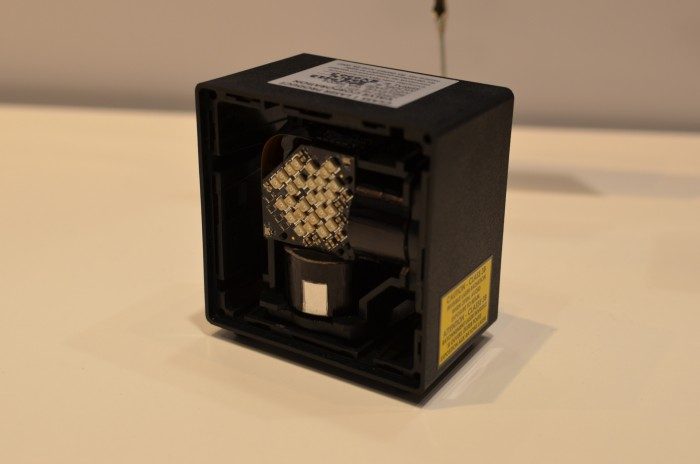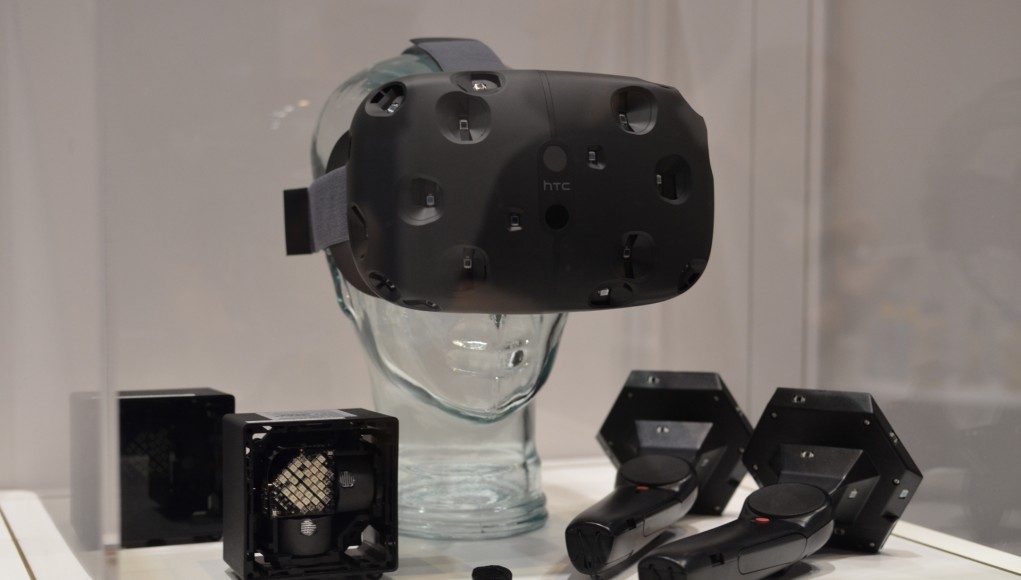Steam VR, Valve’s platform for virtual reality applications using the Steam content portal, has been updated and brings with it support for their promising new tracking solution, Lighthouse as well as a demo application for you to try it out.
GDC 2015 was unquestionably a special week for virtual reality enthusiasts. HTC’s launch of their Steam VR Headset the Vive just prior paved the way for an avalanche of information and hands-on experience with Valve’s VR platform, Steam VR.
The star of the show was Valve’s proprietary tracking solution using laser base stations, known as Lighthouse. Used in the closed door demos attended by the lucky at GDC, it provides sub-millimetre, precision tracking throughout your room space. With two base stations, Lighthouse provides positional tracking for all Steam VR tracked devices, including headset and controllers. The system impressed almost across the board and what’s more, the developer edition will be making its way to select teams in Spring with the consumer launch likely in November.

Yesterday, an update to the VR portion of Steam, still currently in beta, had some interesting points in the release notes. Primarily, it seems the release beings with it support for Lighthouse and adds a basic test application for lucky owners of early Steam VR hardware. The full release notes are as follows:
MARCH 16 – PROGRAMMER JOE
- The SteamVR beta has been updated with the following changes. Many of these features will be enabled by the next API release but are not yet supported in any published games.General: Added support for VR controllers if they are enumerated by the driver. Added support to allow an application to discovering devices plugged in after the application starts. Added support for chaperoning. This is a system that allows an application to show a user the area that is safe to move in while the user is in VR.
- VR Compositor: This is a new component of SteamVR that simplifies the process of adding
- VR support to an application. Continues to draw an environment even if the application hangs. Simplifies handing off from one application to another without full screen context changes by owning the window on the headset?
- HelloVR: Added this demo VR application that will make sure basic functionality is working. If you run SteamVR this will appear as a launch option. This program is Windows-only for now. Includes support for drawing tracked controllers and tracking reference objects. At the moment only prototype Lighthouse base stations and controllers are supported.
- Oculus: Updated to OVR SDK 0.4.4. You will need to update to at least version 0.4.4 of the Oculus runtime.
Of course, the application is likely useless without Lighthouse compatible hardware to use it with, but it does provide a heartening reassurance that Valve is on track for it’s Spring and Holiday release schedule.
As expected, the company continues supporting the Oculus Rift, with this release requiring users to update to version 0.4.4 of the Oculus runtime.







